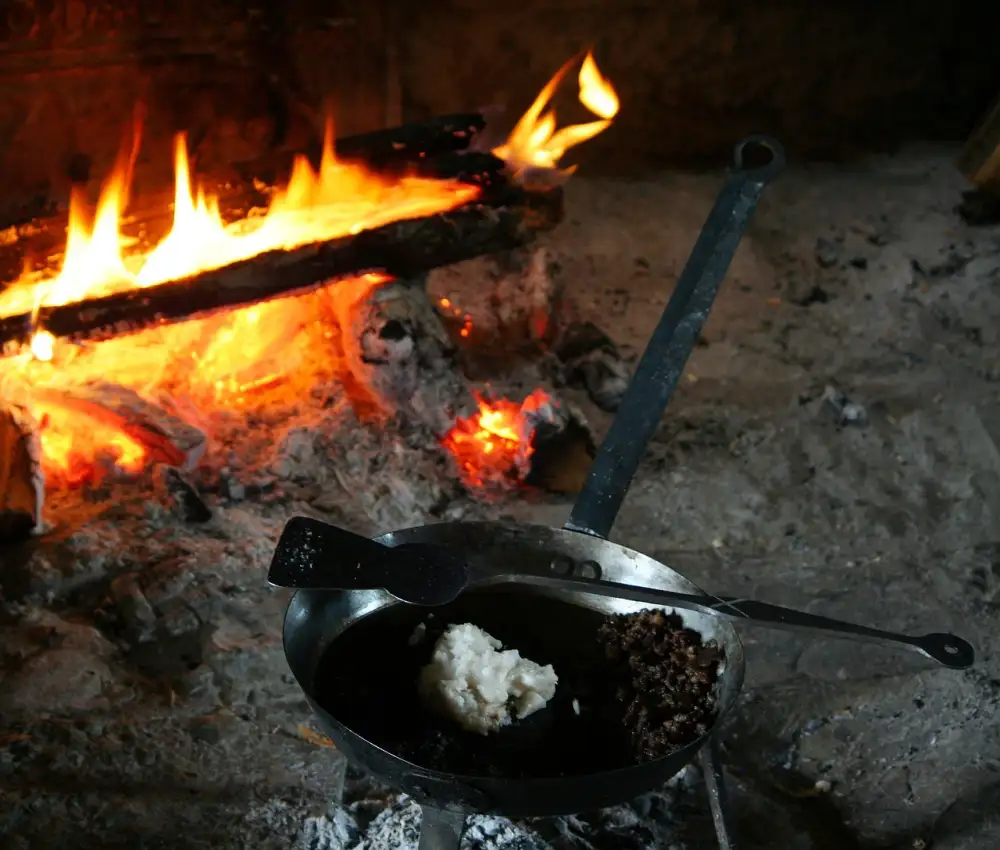Master the Art of Cleaning a Cast Iron Skillet: Essential Tips for Home Cooks

Cleaning a cast iron skillet is an essential skill that every home chef should master. This versatile cookware is known for its ability to retain heat and create delicious, flavorful meals. However, improper cleaning can lead to rust and a loss of seasoning, compromising the skillet's performance. By following a few simple steps, you can ensure that your cast iron skillet remains in pristine condition and continues to serve you for years to come. In this article, we will guide you through the process of cleaning and maintaining your cast iron skillet, so you can unleash your culinary creativity with confidence.
Gather necessary materials for cleaning
To effectively clean a cast iron skillet, it is important to gather the necessary materials beforehand. These items will help you remove any residue without damaging the skillet's seasoned surface. Here are the essential materials you'll need:
1. Hot water: Use hot water to rinse off any loose food particles and make cleaning easier.
2. Soft sponge or brush: Opt for a non-abrasive sponge or brush to avoid scratching the skillet's surface.
3. Mild dish soap: While not always necessary, a small amount of mild dish soap can be used for stubborn stains or odors.
4. Salt: Coarse salt acts as a gentle abrasive and helps remove stuck-on food without damaging the seasoning.
5. Cooking oil: A high smoke point oil like vegetable or canola oil is needed for seasoning the skillet after cleaning.
By having these materials ready, you'll be well-prepared to tackle any cleaning challenge your cast iron skillet may present.
Preparing the skillet for cleaning
Preparing the skillet for cleaning is an important step to ensure effective and safe removal of food residue. Start by allowing the skillet to cool down completely. Never attempt to clean a hot cast iron skillet as it can cause burns. Once cooled, use a stiff brush or sponge to remove any loose food particles. Avoid using soap at this stage as it can strip away the skillet's seasoning. Instead, rely on hot water and gentle scrubbing to loosen any stubborn bits. If necessary, you can also use a small amount of salt as an abrasive agent. Make sure to thoroughly rinse the skillet after cleaning to remove any remaining debris.
Cleaning the skillet using gentle scrubbing techniques
To clean a cast iron skillet, it's important to use gentle scrubbing techniques to avoid damaging the seasoning. Start by rinsing the skillet with warm water and using a soft sponge or brush to remove any loose food particles. Avoid using harsh soaps or abrasive materials that can strip away the seasoning.
For tougher stains or residue, create a paste by mixing equal parts baking soda and water. Apply the paste to the skillet and gently scrub in circular motions. This mild abrasive will help lift stubborn stains without scratching the surface.
If there are still stubborn spots, try adding a small amount of vinegar to the paste. The acidity of vinegar can help break down tough residue. Again, be gentle when scrubbing to avoid removing the seasoning.
After scrubbing, rinse the skillet thoroughly with warm water and dry it immediately with a clean towel. Leaving any moisture on the surface can lead to rusting.
Remember, never soak your cast iron skillet in water as it can cause rusting. Instead, focus on gentle scrubbing techniques and regular maintenance to keep your skillet clean and well-seasoned for years to come.
Removing stubborn residue with salt and oil
Removing stubborn residue with salt and oil is a tried and true method for cleaning a cast iron skillet. After gently scrubbing the skillet with a soft brush or sponge, sprinkle a generous amount of coarse salt onto the surface. The salt acts as an abrasive, helping to loosen any remaining food particles. Next, pour a small amount of vegetable oil onto the salt and use a paper towel to rub it into the surface of the skillet. This combination of salt and oil creates a paste that helps lift away stubborn residue. Continue rubbing in circular motions until the residue is loosened. Rinse the skillet thoroughly with warm water, making sure to remove all traces of salt and oil.
Drying and seasoning the skillet after cleaning
After cleaning your cast iron skillet, it is crucial to dry it thoroughly to prevent rusting. Start by using a clean, dry cloth or paper towel to remove any excess moisture. Then, place the skillet on a stovetop burner set to low heat for a few minutes. This will help evaporate any remaining water.
Once the skillet is completely dry, it's time to season it. Seasoning involves applying a thin layer of oil to the skillet's surface to create a protective barrier against rust and enhance its non-stick properties. To do this, pour a small amount of vegetable oil or melted shortening onto a paper towel and rub it all over the skillet, including the handle and exterior.
Next, preheat your oven to 350°F (175°C). Place the oiled skillet upside down on the middle rack of the oven with a baking sheet or aluminum foil on the lower rack to catch any drips. Bake for about one hour, then turn off the oven and let the skillet cool inside.
Repeat this seasoning process regularly to maintain your cast iron skillet's optimal condition. The more you use and season it, the better its non-stick surface will become over time.
Remember that cleaning and seasoning are essential steps in caring for your cast iron skillet. By following these tips, you can ensure that your skillet remains in excellent condition for years to come.
Storing the skillet properly to maintain its condition
Storing the skillet properly is crucial to maintain its condition and prevent rusting. After cleaning and drying the skillet thoroughly, apply a thin layer of vegetable oil or shortening to the entire surface. This helps create a protective barrier against moisture. Place a paper towel or cloth inside the skillet to absorb any excess oil. Store the skillet in a cool, dry place away from humidity and direct sunlight. Avoid stacking other pans on top of it to prevent scratches. With proper storage, your cast iron skillet will remain in great condition for years to come.
In conclusion, mastering the art of cleaning a cast iron skillet is essential for every home cook. By following these tips and techniques, you can ensure that your skillet remains in top condition for years to come. Remember to always gather the necessary materials before starting the cleaning process and to prepare the skillet properly by removing any food debris. Use gentle scrubbing techniques and if needed, remove stubborn residue with a mixture of salt and oil. After cleaning, make sure to thoroughly dry the skillet and apply a thin layer of oil to season it. Finally, store your cast iron skillet in a cool, dry place to prevent rusting. With proper care and maintenance, your cast iron skillet will continue to be a reliable tool in your culinary adventures.
Published: 22. 01. 2024
Category: Home



